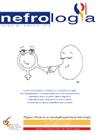Unveiling the antiurolithiatic potentiality of two benzene sulfonamide derivatives against ethylene glycol-induced renal calculi
IF 2
4区 医学
Q2 UROLOGY & NEPHROLOGY
引用次数: 0
Abstract
Objective
Oxidative stress and inflammation play crucial roles in the onset of kidney injury and crystal formation caused by hyperoxaluria. Indapamide is a potent medication for treating renal calculi, but it has severe side effects such as hypokalemia, hypercalcemia, and hyperuricemia. Therefore, it is advisable to explore alternative treatments that do not have these side effects. The study aimed to reveal the antiurolithiatic potential of two benzene sulfonamide derivatives (SBCl and SBF; A and B, respectively) against ethylene glycol-induced kidney stones.
Methods
The rats were divided into two main groups: the first group consisted of 20 rats with induced kidney stones, and the second group included 15 control rats. This division enabled a comparative analysis between rats with kidney stones and those without, offering insights into the effects of kidney stone induction on various physiological parameters and biochemical markers. The effectiveness of benzene sulfonamide derivatives (compounds A and B) was assessed in rats with induced kidney stones. The treatment was given orally by gavage for 21 days, administered every 48 h after inducing kidney stones with 0.12 ml of 5% ethylene glycol (EG).
Results
The influence of compounds A and B on electrolytes, biochemical, antioxidant, and inflammatory reactions in induced kidneys underscores their potential therapeutic advantages in alleviating the advancement of kidney stone disease and related complications.
Conclusion
Both compounds were found to possess equal effectiveness in inhibiting the complications of stone formation. However, SBCl-EG showed superior antioxidant and inflammatory parameters effects compared to SBF-EG. Our study's findings underscore the potential benefits of derivatives in treating nephrolithiasis and related oxidative disorders, highlighting their superior effects on antioxidant and inflammatory responses compared to standard treatments.
揭示了两种苯磺酰胺衍生物对乙二醇所致肾结石的抗尿石作用
目的探讨氧化应激和炎症在高氧尿引起的肾损伤和晶体形成中起重要作用。吲达帕胺是治疗肾结石的有效药物,但它有严重的副作用,如低钾血症、高钙血症和高尿酸血症。因此,建议探索没有这些副作用的替代疗法。本研究旨在揭示两种苯磺酰胺衍生物(SBCl和SBF)的抗尿石潜力;分别为A和B)对乙二醇引起的肾结石。方法将大鼠分为两组,第一组20只,第二组15只。通过这种划分,可以对有肾结石和没有肾结石的大鼠进行比较分析,从而深入了解肾结石诱导对各种生理参数和生化指标的影响。苯磺酰胺衍生物(化合物A和B)对大鼠肾结石的疗效进行了评估。灌胃给药21 d,每48 h用0.12 ml 5%乙二醇(EG)诱导肾结石。结果化合物A和B对诱导肾脏的电解质、生化、抗氧化和炎症反应的影响,强调了它们在缓解肾结石疾病及其相关并发症进展方面的潜在治疗优势。结论两种化合物对结石并发症的抑制作用相同。然而,与SBF-EG相比,SBCl-EG具有更好的抗氧化和炎症参数效应。我们的研究结果强调了衍生物在治疗肾结石和相关氧化障碍方面的潜在益处,强调了与标准治疗相比,它们在抗氧化和炎症反应方面的优越效果。
本文章由计算机程序翻译,如有差异,请以英文原文为准。
求助全文
约1分钟内获得全文
求助全文
来源期刊

Nefrologia
医学-泌尿学与肾脏学
CiteScore
3.40
自引率
7.70%
发文量
148
审稿时长
47 days
期刊介绍:
Nefrología is the official publication of the Spanish Society of Nephrology. The Journal publishes articles on basic or clinical research relating to nephrology, arterial hypertension, dialysis and kidney transplants. It is governed by the peer review system and all original papers are subject to internal assessment and external reviews. The journal accepts submissions of articles in English and in Spanish languages.
 求助内容:
求助内容: 应助结果提醒方式:
应助结果提醒方式:


